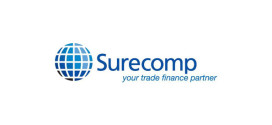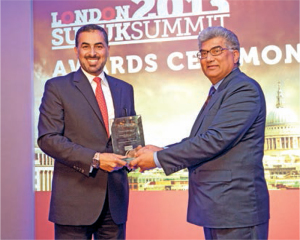
According to several bankers in the Islamic capital market space, Sukuk activity by international issuers indicates that Islamic finance, especially the Sukuk, is becoming a more mainstream source of funding. MUSHTAK PARKER provides a unique, in-depth, up-to-date analysis of the situation.
If the growth trajectory of global Sukuk issuance continues as it has done over the past three years, it could become the iconic Islamic fund raising instrument, now attracting not only traditional issuers, both repeat issuers such as the quasi-sovereign Islamic Development Bank (IDB) and new ones such as sovereign Sharjah, but, perhaps more importantly, also non-traditional ones from the developed and emerging economies in the UK, Hong Kong, South Africa and Luxembourg.
Indeed, in 2014 all the above sovereigns and quasi-sovereigns have successfully gone to the international markets primarily to raise funds for benchmark reasons to pave the way for corporate issuances in their jurisdictions or for resource mobilisation to finance balance sheet or development activities.
Equally importantly, according to several bankers in the Islamic capital market space, Sukuk activity by international issuers indicates that Islamic finance, especially Sukuk, is becoming a more mainstream source of funding.
One strongly growing but revealing feature of these sovereign and quasi-sovereign issuances from both traditional and non-traditional markets is the heavy subscription from investment accounts from the MENA region, primarily from investors in the Gulf Cooperation Council (GCC) countries. These range across the rating and risk spectrum from AAA-rated papers to BBB- investment grade papers.
This suggests a number of investor and investment dynamics at play in the GCC market in particular, which bankers in the region emphasise will persist over the medium term for a manifold of reasons. A crucial consideration here is that heavy demand from a surplus liquidity region such as the GCC does have a direct correlation with the pricing of the Sukuk issuances – the yardstick is usually, the heavier the demand, the tighter the pricing or at least the possibility of price tightening on the initial pricing guidance, albeit it can also depend on other factors such as the issuer, its rating and, of course, credit enhancement factors such as guarantees, either sovereign or third-party guarantees.
Sukuk issuance after the global financial crisis in 2008 was only partially interrupted by the recovery of Western economies and the subsequent curtailment of the United States’ stimulus programme (quantitative easing and tapering), and, perhaps, by signs of a slowdown in emerging markets in the last two years.
According to the MIFC Report on the Global Islamic Finance Market in 2013, global Sukuk issuances in 2013 totalled $119.71bn, a decrease of 8.77 per cent on the record $131.2bn of issuances in 2012. Sukuk issuances in the first eight months of 2014 totalled $89bn, and is expected to surpass the 2013 figure.
Malaysia in 2013 accounted for 62 per cent of all the Sukuk issuances followed by Saudi Arabia with 18 per cent and the UAE with 14 per cent. This year has seen a big rise in GCC Sukuk issuances, especially from the UAE.
For instance, according to Alex Armstrong, head of financial institutions and structured finance, at QInvest, the investment banking arm of Qatar Islamic Bank (QIB), the largest Islamic bank in Qatar, “we are seeing strong volumes in global Sukuk activity and we expect 2014 issuance to be greater than last year. With competitive pricing, product innovation and deep liquidity, Islamic finance is becoming an increasingly attractive source of funding for issuers around the world. A number of issuers from outside the Islamic world – including the Hong Kong Monetary Authority and the United Kingdom government – have successfully raised funding through Sukuk in recent months and we are expecting others to follow suit. Meanwhile, investor demand for Islamic products is strong and we fully expect demand to exceed supply for some time to come”.
Year to date, QInvest, advised on $3.25bn of Sukuk transactions, which represents approximately 20 per cent of the dollar Sukuk market. This includes issuances from the governments of Hong Kong and Luxembourg, and corporate issuers such as Goldman Sachs, Kuveyt Turk Participation Bank, Dar Al Arkan Real Estate Development Company (DAAR) in Saudi Arabia, Turkiye Finans and Al Baraka Turk Participation Bank.
The market is still dominated by sovereign and quasi-sovereign issuers, albeit the private sector involvement is fast increasing.
Emad Al Monayea, CEO and a board director of KFH Investment Limited, the investment banking arm of Kuwait Finance House (KFH), one of the largest Islamic banks in the world in terms of size of assets and balance sheet, maintains that GCC investors are finding investing in Sukuk very attractive for several reasons.
“There is growing competition,” explained Al Monayea, “between GCC banks especially the conventional ones for investment avenues, some of which are providing more and more commitments just to win mandates. There is also more interest in international papers because the investors are seeking portfolio diversification as there has been over-concentration on investing in local papers.”
According to Al Monayea, there also remains a huge amount of excess liquidity in the GCC, where the beginnings of a nascent secondary trading market within GCC banks is also bring promoted by assets managers. There is also the prospect of better returns and enhanced exits from secondary market trading.
GCC investors have indeed dominated the distribution allocations for most, if not all, of the sovereign and quasi-sovereign Sukuk issuances in 2014. According to international credit rating agency, Standard & Poor’s, the majority of recent Sukuk issuances from the GCC) region have been from government-related borrowers. The UAE issuers collectively lead international issuance globally with over $26.8bn thus far in 2014.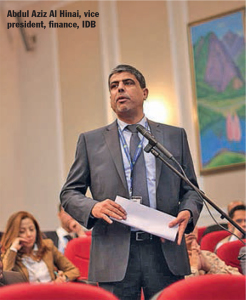
Take, for instance, the issuances in 2014 by the IDB, the most proactive and crucial participant in the Sukuk market, which is also very committed to the continued development of the market under its core mandate.
The IDB closed its latest issuance in September 2014 – a 5-year $1.5bn Sukuk Al Wakalah, which is the second international Sukuk issued by the multilateral development bank (MDB) this year under its $10.0bn Trust Certificate Issuance Programme, which was launched in December 2013. In March this year the IDB issued a similar 5-year $1.5bn, Sukuk Al Wakalah.
In addition, the IDB has issued two Sukuk through private placement in 2014 – a $1bn Sukuk with a tenor of 5 years in July, and a $100m Sukuk in April. As such, in total the IDB has raised $4.1bn from the markets in 2014 alone under the new $10bn Trust Certificate Issuance Programme, which means that the programme is almost half depleted in a mere nine months.
The IDB is under pressure to increase its programme to much higher levels to enable it to issue Sukuk much more frequently and in larger volumes, as peer multilaterals are doing, so as to build a strong issuance history with which a wider base of investors can become familiar. This would also drive down the cost of finance and, therefore, issuance, which is still comparatively higher than peer multilaterals, including the African Development Bank.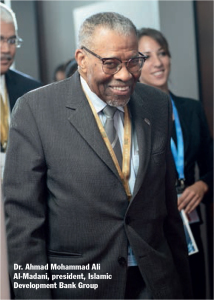
The privately placed Sukuk were largely placed with GCC investors, which, as for the international issuances, include central banks, sovereign wealth funds (SWFs), banks and asset managers.
The investment distribution for the IDB Sukuk issuances in March and September 2014 was largely allocated to investors from the Middle East, who accounted for 51 per cent and 59 per cent of the uptake respectively. This was followed by investors from Europe with 27 per cent and 14 per cent; and Asia with 22 per cent and 27 per cent respectively.
Overall, emphasised the IDB, the deal saw strong participation from real money accounts and official institutions providing credence to IDB’s credit strength. Another encouraging sign is that for the September Sukuk 43 per cent of the subscription was allocated to central banks and sovereign wealth funds, followed by 34 per cent to banks, 12 per cent to fund managers and 11 per cent to other investor types.
Not surprisingly, Dr Abdul Aziz Hinai, vice-president, finance, who is effectively leading the multilateral’s resource mobilisation strategy, was “delighted with the outcome of the deal, which achieved our main objectives for the transaction to build on the success of the deal in February 2014 in order to establish another liquid benchmark and further position the IDB in line with its supranational peer group. I am particularly happy to see that the deal was placed into a high-quality and diversified order book, including a number of first time investors to IDB credit”.
The distribution trend for pure sovereign Sukuk issuances in 2014 is the same, especially for those issuers sought-after by and those with whose credit and market risk GCC investors are very familiar and comfortable with. The UK, for instance, is a prime example here.
The UK Treasury set the trend earlier this year with the issuance of its debut UK£200m Sukuk issuance, thus becoming the first full sovereign issuance by a European government and the first such Sukuk to be issued outside the Muslim world.
The sheer demand for the Treasury papers was revealing. The issuance by a book building exercise through syndication, which was lead managed by HSBC, Barwa Bank of Qatar, National Bank of Abu Dhabi, CIMB of Malaysia and Standard Chartered Bank, in reality received orders in excess of UK£2.3bn that was oversubscribed 11 times.
For market politics reasons, the UK Treasury resisted the temptation to raise the size of the issuance, which is not unusual in such circumstances. Instead, it settled on a more equitable distribution allocation not to upset the various traditional Islamic finance investment centres.
As such, the allocation was well spread out globally, with 39 per cent of the Sukuk distributed to investors in the UK, 37 per cent to those in the Middle East (mostly in the GCC countries) and 24 per cent to those in Asia.
This despite the tight pricing for the issuance, which indicated that returns were not necessarily the over-riding consideration from investors. Despite the tight pricing – the profit rate on the Sukuk, as announced by the Treasury’s debt management office (DMO), was set at 2.036 per cent, being a spread of 0 (zero) basis points relative to that of the 13⁄4 per cent Treasury gilt 2019 reference gilt.
In fact, the tightening of the profit rate was driven down because of the heavy demand. This also sends out a very positive message to the market that Sukuk can be and indeed are just as competitive public fund raising debt instruments compared to conventional peer equivalents.
However, other institutions involved in the UK Sukuk issuance want the Treasury to go even further. “For a truly deep Sukuk market to develop in the EMEA (Europe, Middle East and Africa) region,” explained Mohamad Safri Shahul Kamid, Deputy CEO of CIMB Islamic Bank, “the corporate issuers need to be encouraged and advised. I think the UK government can take the lead by establishing a pool of expertise for structuring/advisory services for the corporate issuers. In this respect, tapping into the GCC investor pool will help to diversify funding sources for the corporates in Europe and assist in the development of a secondary trading market for Sukuk.”
A major challenge though for both the government and the London Stock Exchange, on which a growing number of international Sukuk are listed, is how to encourage quasi-sovereign and corporate issuers to foray into the Sukuk market and market makers to stimulate a genuine secondary market. One UK-based banker points out that the UK debut Sukuk is likely to be relatively illiquid, as the dearth of top quality Sukuk in the market has encouraged most investors, especially those in the GCC to hold on to the certificates till maturity.
The domination of GCC liquidity in Sukuk investment is not confined to non-Muslim sovereign issuers. The trend is equally robust for MENA sovereign issuers.
In September also, the Government of Sharjah issued its debut offering – a $750m 10-year Sukuk Al Ijarah, which is the first time a sovereign has executed a 10-year Sukuk in its debut issuance.
Judging by the response to the Government of Sharjah (GOS) Sukuk, it seems that investor appetite for such financial papers remains unsatisfied with demand far exceeding the supply of highly rated sovereign Sukuk offerings. The GOS Sukuk was oversubscribed 10 times, with demand coming from a broad-based spectrum of high quality investors. The final order book reached $7.85bn from around 250 different investor accounts within a day, including central banks and sovereign wealth funds, fund managers, insurance companies and banks from a wide geographic spread across Asia, Europe, the Middle East and offshore .
The allocation by geography showed that Middle East (mainly GCC) investors accounted for exactly half of the uptake, followed by UK investors with 20 per cent, Europe (excluding the UK) with 11 per cent, Asia with 14 per cent and others with five per cent.
Sheikh Mohamed Bin Saud Al Qasimi, chairman of Sharjah Finance Department, explained that “this is a major landmark in the financial and economic development of Sharjah, reflecting many months of hard work. As a finance department, we have met all of our own objectives, but, more importantly, we have shown the best face of the Emirate to a global audience of investors and received a hugely positive response”.
In a statement, the Government of Sharjah maintained that this transaction has helped it to diversify its investor base, access longer fixed-term tenors and optimise pricing. From a wider economic perspective, the issuance would provide a benchmark for any transactions undertaken by Sharjah entities in both the wider public sector and the private sector. It will also enhance the efforts of the UAE authorities to develop the local financial markets.
Bankers emphasised that the buoyant demand for the GOS Sukuk offering reflected the strength of the Emirate’s value proposition for investors, which is backed by strong investment-grade credit ratings from Standard & Poor’s (‘A’ Stable) and Moody’s (‘A3’ Stable).
According to Emad Al Monayea, CEO of KFH Investment, which was one of the joint lead managers to the issuance, ”the clear success of the Government of Sharjah’s debut Sukuk issuance shows the strength and the potential of the Emirate, and the confidence that investors from around the world have in the GCC region and Sharjah in particular”.
He is confident that the Government of Sharjah plans to continue to use borrowing (including through Sukuk issuances) to fund priority capital investment, particularly where it generates a financial and economic return.
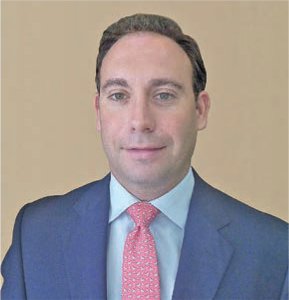
Similarly, Andy Cairns, global head of debt origination and distribution, National Bank of Abu Dhabi, maintained that “Sharjah’s debut offering – evidenced by geographical breadth and high quality of investor participation, the duration extension achieved and the impressive spread outcome – demonstrates the government’s standing as a stand-out benchmark sovereign issuer within the GCC.”
At the same time, the 5-year $1bn Sukuk Al Ijarah (leasing Sukuk), the region’s first Halal Dim Sum Sukuk/bond, by the Government of the Hong Kong Special Administrative Region (HKSAR) also in September this year, under the Government Bond Programme (GBP), which was introduced in 2009 to expand the base of investors for Government bond issues, is also music to the ears of GCC investors.
The Sukuk, according to the Hong Kong Monetary Authority (HKMA), is “the world’s first dollar-denominated Sukuk originated by an AAA-rated government” and the largest in size by a non-traditional issuer.
Not surprisingly, the demand for the issuance was strong with the order book exceeding $4.7bn, which was also reflected in the tight pricing at 2.005 per cent (23 basis points over 5-year Treasuries).
Indeed, John C Tsang, Financial Secretary of Hong Kong, was expectant about future Sukuk originations out of Hong Kong. “We are pleased to see such strong demand for the HKSAR Government’s inaugural Sukuk, as evidenced by the significant order book size and tight pricing. The Sukuk marks the first dollar Sukuk originated by an AAA-rated government in the global Islamic financial market and signifies an important milestone in the development of the Islamic capital market in Hong Kong.
“The success of this transaction demonstrates that issuance of Sukuk using Hong Kong’s platform is a viable fund-raising option and widely accepted by investors around the world. I hope that the Sukuk issuance will catalyse the further growth of the Sukuk market in Hong Kong by encouraging more issuers and investors to participate in our market,” he emphasised at the closing of the Sukuk issuance.
The Sukuk saw strong demand from global investors and was allocated to more than 120 global institutional investors, with 36 per cent of the Sukuk distributed to the GCC, 47 per cent to Asia, six per cent to Europe and 11 per cent to the United States. The 36 per cent allocation to the GCC is interesting given that GCC investors, let alone Islamic investors, are not that familiar with Hong Kong and Chinese risk, and as such are not natural investors in government-issue papers.
The various sovereign Sukuk issuances in recent weeks, emphasised one banker, indicates that the Sukuk market is diversifying beyond its traditional strongholds and opening up to issuers the world over. This would pave the way for corporates who are looking to access the increasing amount of Islamic funds available.
The Hong Kong Monetary Authority (HKMA), in an interview, confirmed that “the objective of the Government Sukuk is to attract more international and local investors to our financial market. Given the shortage of high-quality Sukuk in the global market, the strong credit rating of the HKSAR Government is well-positioned to fill the gap by providing high-quality Sukuk to meet the strong demand from investors.
“We are very pleased to see that the Sukuk issuance has attracted interest from a diverse group of conventional and Islamic investors and was allocated to institutional investors from the Middle East, Asia, Europe and the United States (some of which were investors who had rarely participated in Hong Kong’s financial market prior to the Sukuk issuance).
“At the same time, Hong Kong has been serving as a centre for international financial intermediation for many years, matching investors and fund-raisers from different parts of the world. Development of an Islamic finance market in Hong Kong is, therefore, just a natural extension of our existing role. More specifically, introduction of Islamic financial products in Hong Kong can provide an attractive investment alternative for investors while offering fund-raisers a viable alternative tool to raise money.”
The HKMA emphasises the significant benefits for fund-raisers, too. First, fund-raisers would be able to broaden their investor base. “By issuing conventional bonds, they will typically be able to tap conventional investors only. But by issuing Sukuk, they will be able to get both conventional and Islamic investors to participate. In particular, issuing Sukuk will help them to gain access to the large pool of liquidity in the Middle East and other Islamic countries, where investors are progressively looking for Shariah-compliant assets in this part of the world. At the same time, more and more conventional investors are also looking to diversify their portfolios into Sukuk as a new asset class. So, issuing Sukuk would enable fund-raisers to enjoy a wider and more diverse investor base.”
The HKMA also believes that Hong Kong is well-positioned to provide a platform for financial intermediation between the Islamic world and Mainland China, transferring the savings and funds from the Islamic world to Asia (especially Mainland China) for investment and vice versa. In particular, given that there are a lot of enterprises in Mainland China, which have strong funding needs, Hong Kong can be a springboard for them to expand their investor base and profile in the Islamic world.
Two other sovereign Sukuk debutantes also in September and October 2014 that have also attracted widespread attention from GCC investors are South Africa and Luxembourg.
The latter is an AAA-rated country whereas the former has a BBB- investment grade rating. Their risk characteristics could not be more different. Yet the uptake from MENA/GCC investors has been remarkably high.
The Grand Duchy of Luxembourg issued the first Eurozone offering – a 5-year EUR200m Sukuk Al Ijarah issued against three government buildings in the Kirchberg area of the city state, and priced at a profit rate of 0.436 per cent per annum.
The South African Treasury on the other hand issued the country’s inaugural Rainbow $500m Sukuk Al Ijarah with a tenor of 5.75-years and was priced at a coupon rate of 3.90 per cent, representing a spread of 180 basis points above the corresponding mid-swap (benchmark) rate.
The Luxembourg Sukuk was oversubscribed more than two times, while the South African offering attracted subscription orders from investor accounts totalling $2.24bn, which means the offering was 4.24 times oversubscribed.
The Luxembourg order book was driven by demand across high-quality fixed-income investors across a wide geographical base. In terms of geographic distribution, a staggering 61 per cent was placed with GCC investors, 20 per cent in Europe and 19 per cent in Asia.
Pierre Gramegna, Minister of Finance of the current socialist government, was pleased “that we have managed to place the Sukuk at a cost attractive financing for the state. This shows the importance of our rating ‘AAA’, which is a sign of investor confidence in the stability of Luxembourg and the strength of our public finances”.
In contrast, South Africa’s investment grade rating of BBB- with a stable outlook by Standard & Poor’s and its BBB rating with a negative outlook by Fitch Ratings did not deter investors in the GCC and elsewhere given that several other sovereign Sukuk issuers, including Turkey and Indonesia, too, have investment grade ratings by the top three international rating agencies.
The strong demand for the “Rainbow” Sukuk indicates that global capital markets remain amenable to and comfortable with South African credit risk. The joint lead arrangers put this down to the transparency and fairness demonstrated by the National Treasury, which allayed most of the fears relating to political and market risk and uncertainty.
“The decision to issue an Islamic bond,” explained the National Treasury, “has been informed by a drive to broaden the investor base and to set a benchmark for state-owned companies seeking diversified sources of funding for infrastructure development. The investor distribution (for this debut Sukuk) represents a resounding success in building a more diversified investor base for South Africa and further demonstrates confidence by investors in the government’s ability to maintain its sustainable macro-economic policy framework coupled with prudent fiscal management.”
This is implicit in the geographic distribution of the investors. The dual tranche issued in July by the National Treasury, had an investor distribution comprising 62 per cent in the US, 19 per cent in the UK, 17 per cent in Europe and two per cent from the rest of the world. In contrast, the Sukuk transaction investor distribution consisted of 52 per cent from the Middle East, 18 per cent from the UK, nine per cent each from Europe and Asia, eight per cent from the US Offshore, three per cent from Africa and one per cent from the rest of the world.
Indeed, the debut Sukuk has opened several substantial new non-traditional investor bases in the Middle East, Malaysia, Brunei, Turkey and Hong Kong from whom it can raise funds through the international capital markets. This, emphasise bankers, augurs well for future Sukuk originations out of South Africa.
KFH Investment was one of the three joint lead arrangers of the South African Sukuk. For CEO Emad Al Monayea, the transaction is also a personal vindication. He has engaged with the South African authorities and state-owned companies for more than a decade trying to convince them of the merits of Sukuk issuance.
KFH Investment, according to Al Monayea, was responsible for $1,004bn of orders from the total $2.24bn. More importantly, more than half – $258m – of the allocated investor orders was allocated to KFH Investment clients. The fact that the Middle East, by far GCC investors, accounted for an impressive 52 per cent of the subscription is an important new indicator that Gulf investors have a strong appetite for investment grade Sukuk issuances out of South Africa.
This augurs well for future issuances from state-owned companies in the international markets. Emad Al Monayea confirmed that he anticipates “a lot of new doors to be opened mainly from government enterprises seeking new financing resources for their new projects, mainly in expansion and infrastructures. Further, we have already started to receive inquiries from other African countries demonstrating interest to tap the international Sukuk market”.
He has been in talks with utilities such as Eskom and the South African National Roads Agency Limited SOC Ltd (SANRAL), the two state-owned entities that have expressed a desire to tap the Sukuk market to finance expansion and other balance sheet activities.
Rassem Zok, CEO of Standard Bank, Dubai, one of the other joint lead arrangers also reiterated that “this inaugural landmark Sukuk issuance by the National Treasury is testament to Standard Bank’s ability to connect the substantial Gulf-based pools of liquidity to our key clients across the continent”.
One remarkable demonstration by GCC investors in the Sukuk market in September was their unwavering support for the debut corporate Sukuk of international investment bank, Goldman Sachs, which successfully closed its 5-year $500m Sukuk Al Wakalah, thus becoming only the second conventional global bank to do so after HSBC issued a $500m Sukuk in 2011 and the first such bank to do so.
In fact, Goldman Sachs had been planning to issue a Sukuk since 2011 after it launched a $2bn Sukuk Issuance Programme. But through a string of unfortunate incidents relating to the Shariah governance and structure of the proposed programme and issuances, it was abandoned because of a campaign of controversy surrounding the structure of the Sukuk.
Following a revision and change of the structure, the Sukuk is a triumph for the resilience of the bank. After investor roadshows, which were confined to the GCC region, the issuance was priced at a profit rate of 2.844 per cent, at a spread of MS (Mid Swaps) + 90 basis points. Although this was tighter than the initial price guidance of 95 basis points, it was higher than equivalent Goldman Sachs conventional 2019 bonds, which were priced at 2.625 per cent.
The mandated joint lead arrangers read like a Who’s Who of the GCC investment banking fraternity. They comprised heavyweights such as Abu Dhabi Islamic Bank, Emirates NBD, National Bank of Abu Dhabi, Qatar’s QInvest and NCB Capital of Saudi Arabia, in addition to Goldman Sachs itself.
Not surprisingly, the issuance, which was rated A-minus by Standard & Poor’s and A by Fitch Ratings, was oversubscribed three times with the order book reaching $1.5bn, with banks from the Middle East investors, especially from Qatar and the United Arab Emirates, accounting for a staggering 87 per cent of the subscription.
 Cash And Trade Magazine For Cash and Trade professionals in the Middle East
Cash And Trade Magazine For Cash and Trade professionals in the Middle East




